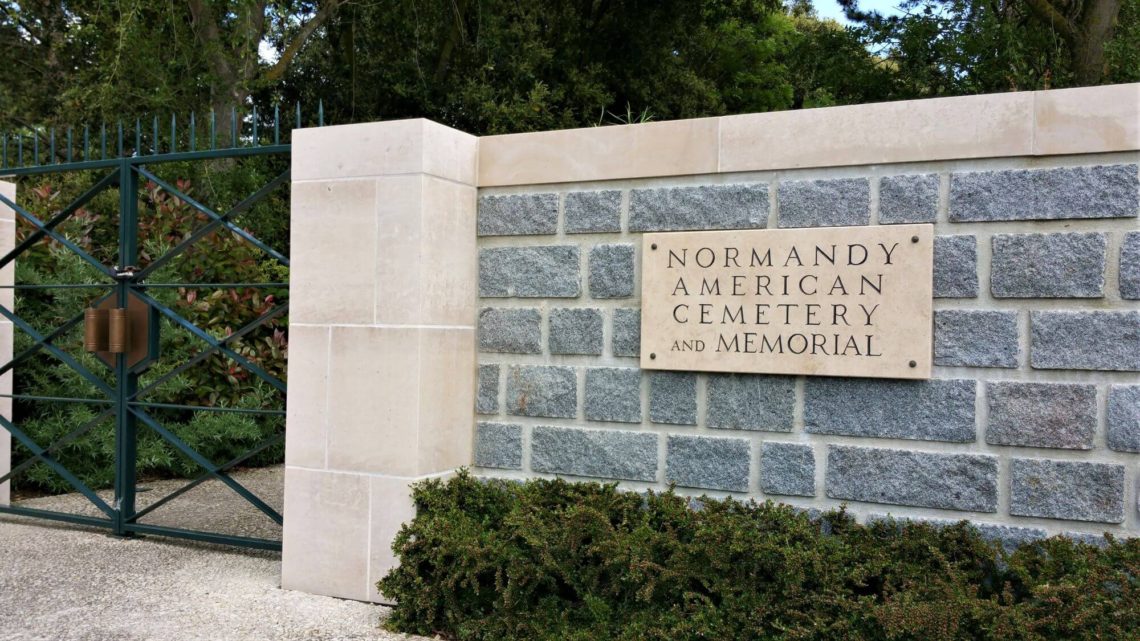
Normandy American Cemetery
172.50 Acres – 9,380 Burials – 9,238 Latin Crosses – 149 Stars of David – 1,557 Missing in Action – 307 Unknowns – 45 Sets of Brothers –
3 Medal of Honor Recipients – Dedicated July 18, 1956 Burials: 9,380 Missing in Action: 1,557
“You are about to embark upon the greatest crusade toward which we have striven these many months. The eyes of the world are upon you … I have full confidence in your courage, devotion to duty and skill in battle.” Gen. Dwight Eisenhower, Message to the troops sent just prior to the invasion of Normandy
For most Americans, when they hear “Normandy,” it is often associated with one of the hardest fought battles during WWII. It seems only fitting that this beautiful sacred land be the final resting place to over 9,000 American soldiers that lost their lives during this conflict. The Normandy American Cemetery sits silently near the cliffside of northern France, overlooking the beach where the most intense fighting took place.
History
In the early predawn hours of June 6, 1944, allied troops, consisting of American, English, and Canadian forces, under Supreme Allied Commander, General Dwight D. Eisenhower, prepared to leave England, cross the English Channel, and head toward the Normandy Beaches in France. Their mission: to liberate France and drive back the Nazi troops that had control of most of the area. Carrying these troops, tanks, and artillery, would be 822 aircraft with paratroopers, 13,000 additional military aircraft, over 6,000 landing craft ships, and other sea vessels.
Codenamed “Operation Overlord,” this battle to secure the Normandy coast began at 6:30 a.m. on June 6, 1944, and would be the largest amphibious campaign in military history. This 50-mile stretch of coastline contained the 5 designated landing areas of Utah, Omaha, Gold, Juno, and Sword beaches.
Knowing that invasion by sea would be difficult while simultaneously landing 3 airborne divisions containing paratroopers on the beach, the U.S. 82nd and 101st, along with the British 6th, landed quietly behind enemy lines. Their job was to secure bridges and roads, and to neutralize German batteries. This tactic worked as it led to confusion within the German troops.
Crossing the English Channel was difficult. Inclement weather created rough seas, while cross-currents caused landing craft to drift off course and away from their landing sites. This bad weather led the Germans to believe that there would be no attack under these conditions. Furthermore, the Germans believed an attack further north in Calais was more likely.
The heaviest defended area was Omaha Beach. It was here that the initial wave of Allied forces would take heavy fire from the German 352nd Infantry, which held the area with machine guns, mortars, and artillery.
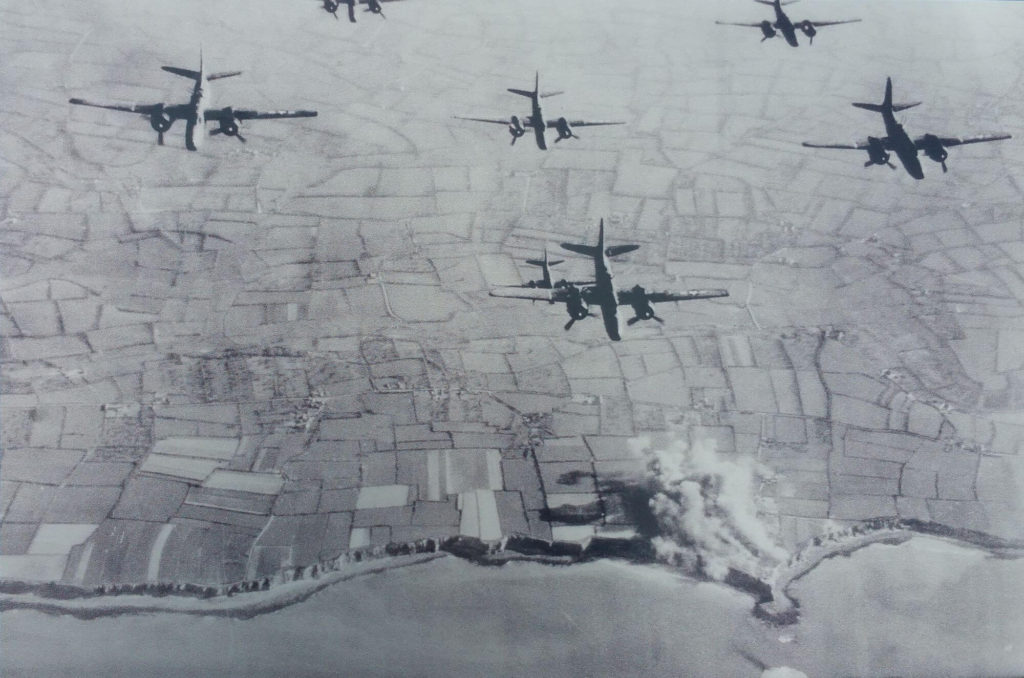
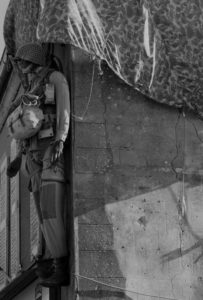
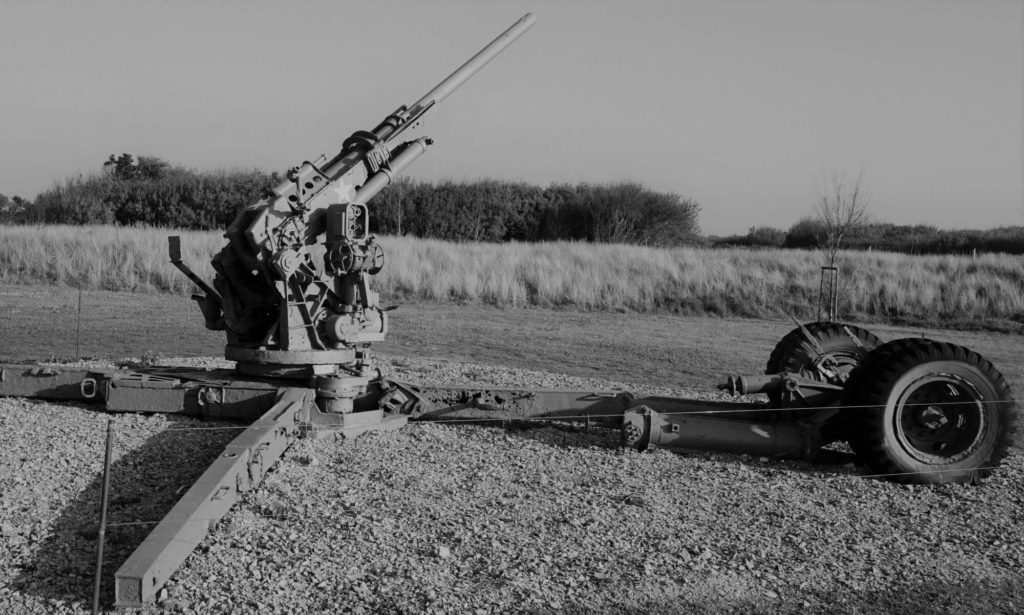
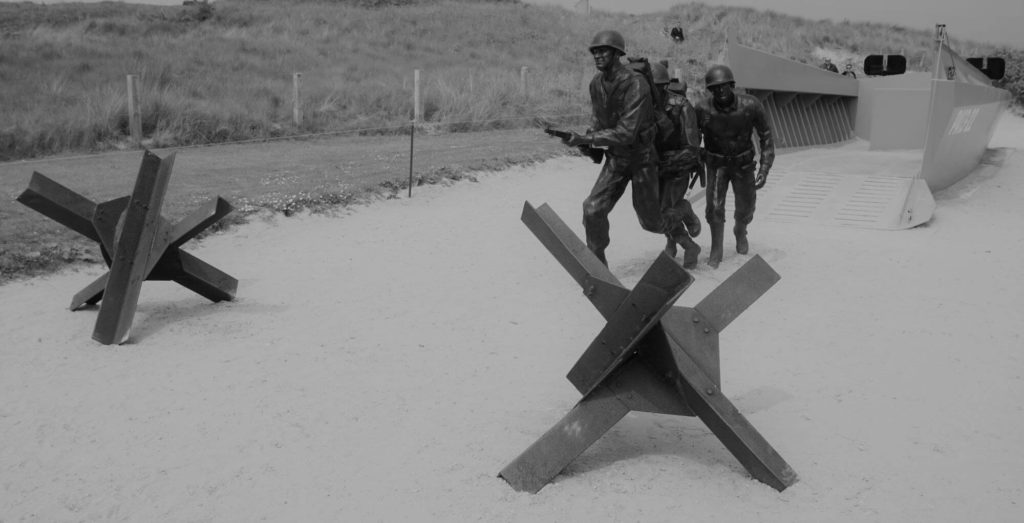
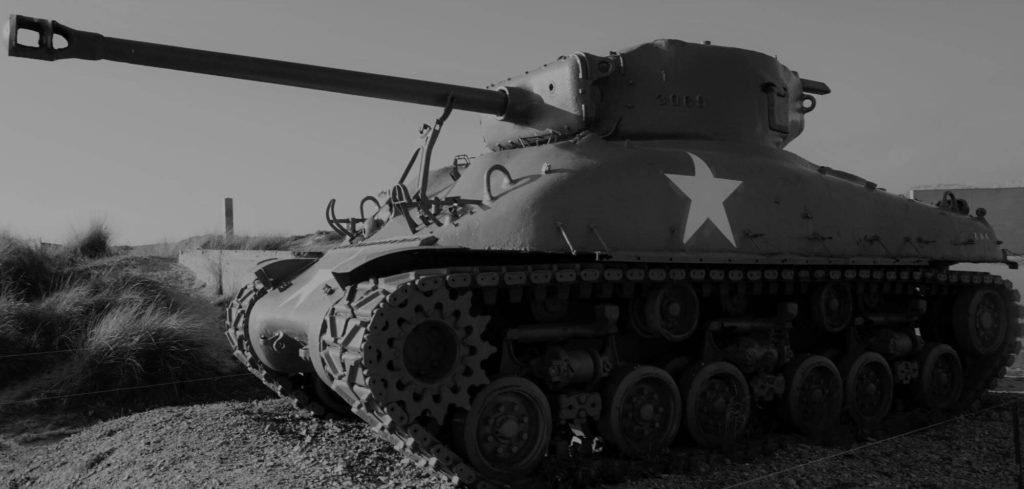
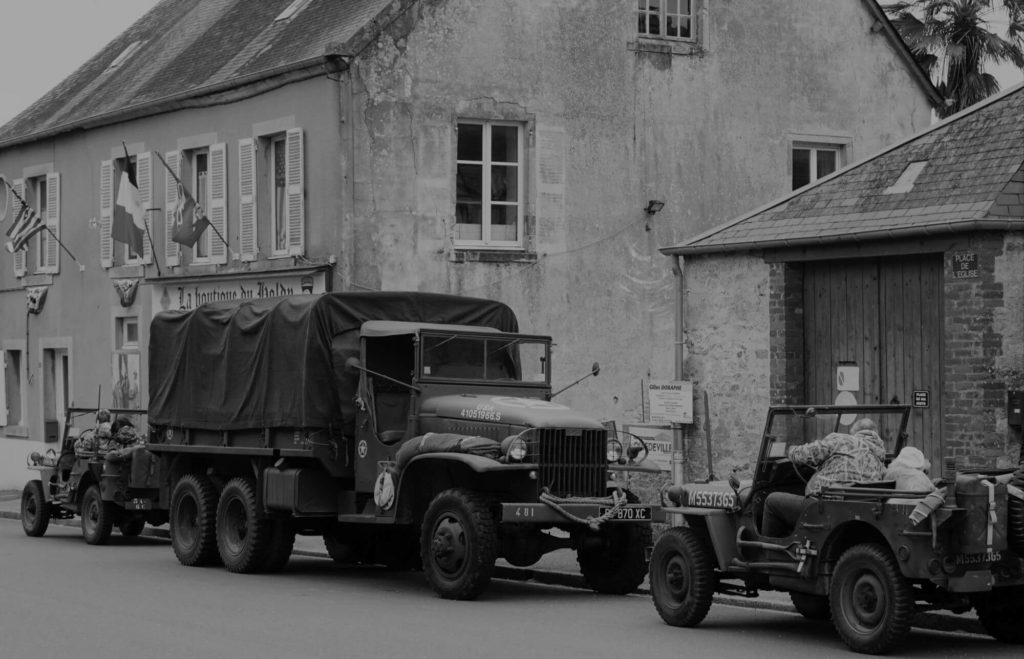
The first to land on Omaha Beach was the U.S. 1st and 29th Infantry. This first wave, consisting of engineers, tanks, and infantry, took the heaviest casualties. In fact, out of the first 16 tanks to land, only 2 survived. This first wave was supposed to clear the beaches of obstacles, but this proved to be difficult, and in turn, caused a slowdown of the following waves.
Due to the rough waters, some boats were unable to get close to shore, meaning soldiers had to jump into the water. Once they made it to land, they would have to cross open beaches, sometimes up to 200 yards long, that was littered with obstacles made of angled iron, placed there to slow down an enemy approach. All the while, they were being shot at by German forces who had possession of the higher ground. Once they managed to clear the beach, they then had to climb the cliffside to reach the area where German forces had control.
The heavily defended routes leading from the beach also slowed progress. This caused equipment to be left on the beach longer than planned, leaving them exposed and open to enemy fire.
At one point, the Allied leaders considered abandoning the operation, but some small infantry divisions were able to punch through with support from the few tanks that had survived.
By days end, the American troops had crossed 300 yards of open beach, bluffs, and the occupied area to where the Normandy American Cemetery now sits.
There were more than 3,000 casualties that day on Omaha Beach. The highest of any Allied landing zone.
By that evening, the U.S. had control of Omaha and Utah Beaches, and the combined British and Canadian forces had control of Gold, Juno, and Sword Beaches. Approximately 156,000 Allied soldiers had landed in Normandy that day; 73,000 of them were Americans. This cleared the way for gliders to bring much-needed supplies and reinforcements.
Within the week, all 5 separate landing groups had connected together.
On July 25, “Operation Cobra” began. Troops pushed southwest into Brittany and east towards the German line. American, British, Canadian, Free French, and Polish forces surrounded the German troops in the Falaise Pocket. The Allied troops began their march towards Paris, meeting up with the Allied troops moving north from the Mediterranean Coast.
The Cemetery
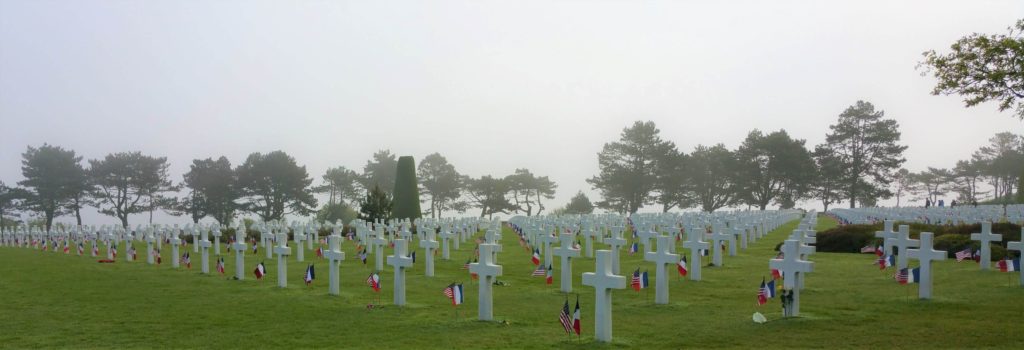
The Normandy American Cemetery is located in Colleville-sur-Mer, in the Normandy Region of France. It sits high on a bluff, overlooking Omaha Beach. It is the first WWII American Cemetery on European soil. This cemetery is the consolidation of 10 temporary cemeteries during the “Operation Overlord” campaign of WWII.
The architectural firm responsible for the design of the Normandy Cemetery was Harbeson, Hough, Livingston, and Larson of Philadelphia, PA. Sculptures in the cemetery were created by Donald de Lue of New York City.
The French government grants use of the land without charge or tax.
Memorial
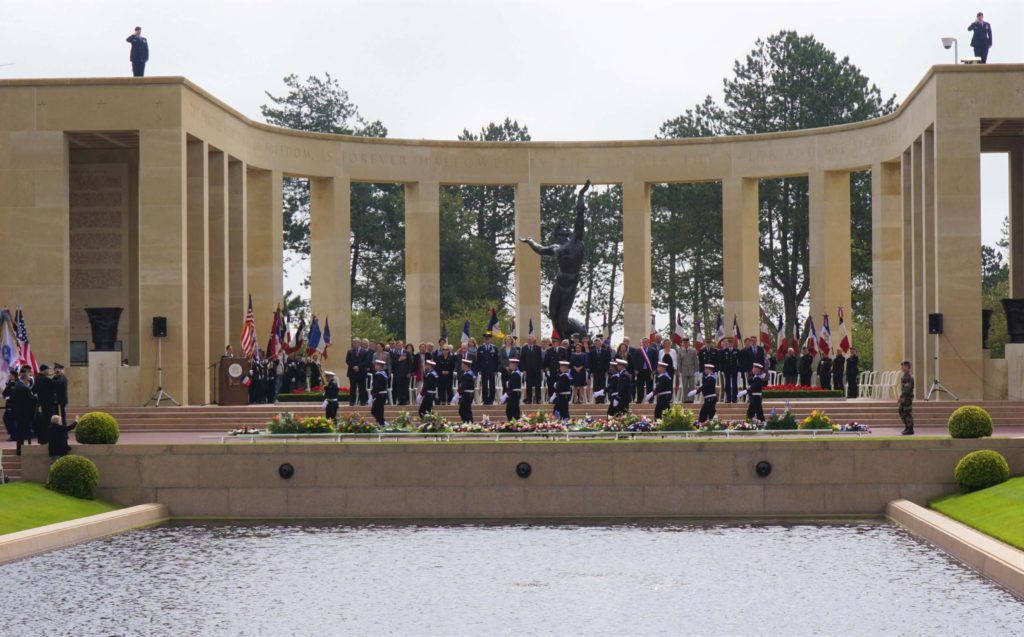
At the memorial center, there is a 22′ bronze statue named, “The Spirit of American Youth Rising from the Waves.” It stands in remembrance to those young men who lost their lives during the D-Day Landings. The statue faces west, towards the headstones. Inscribed at its base are the words, “MINE EYES HAVE SEEN THE GLORY OF THE COMING OF THE LORD.”
A semicircle colonnade, made of limestone, flanks the memorial. At each end, is a loggia that contains maps of military operations and battles in the area.
Behind the memorial is the Wall of the Missing. Engraved in this wall are the names of 1,556 Americans whose bodies were never located or identified. Also memorialized, are the names of 750 American soldiers who died December 24, 1944, aboard the Belgian troopship SS Leopoldville, when their ship was torpedoed by a German submarine.
Chapel
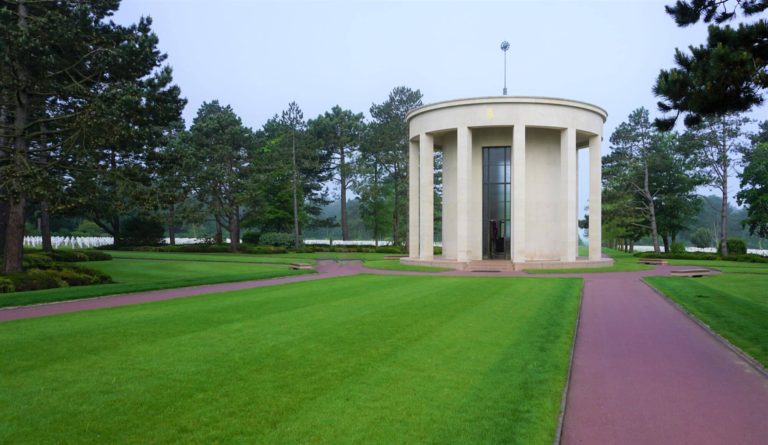
Located in the center of the Normandy American Cemetery, is the chapel. This circular chapel is constructed of a combination of limestone and granite. At the entrance, engraved above the door, is a replica of the Medal of Honor. Inside, a black marble altar sits opposite the door. Above the altar is a translucent amber window, featuring a gold-leafed copper cross. In the bottom window pane, etched into the glass, is the Star of David with a dove in the center. Going up each side of the window are small panes with 48 stars, one for each state that existed at the time the cemetery opened in 1956.
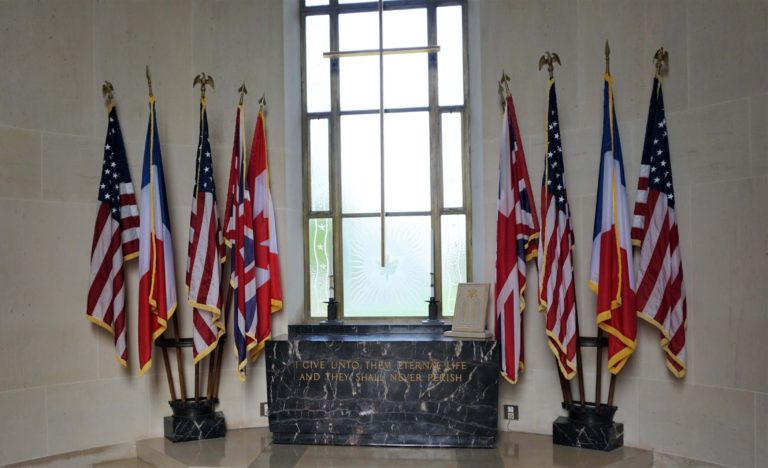
Graves Area
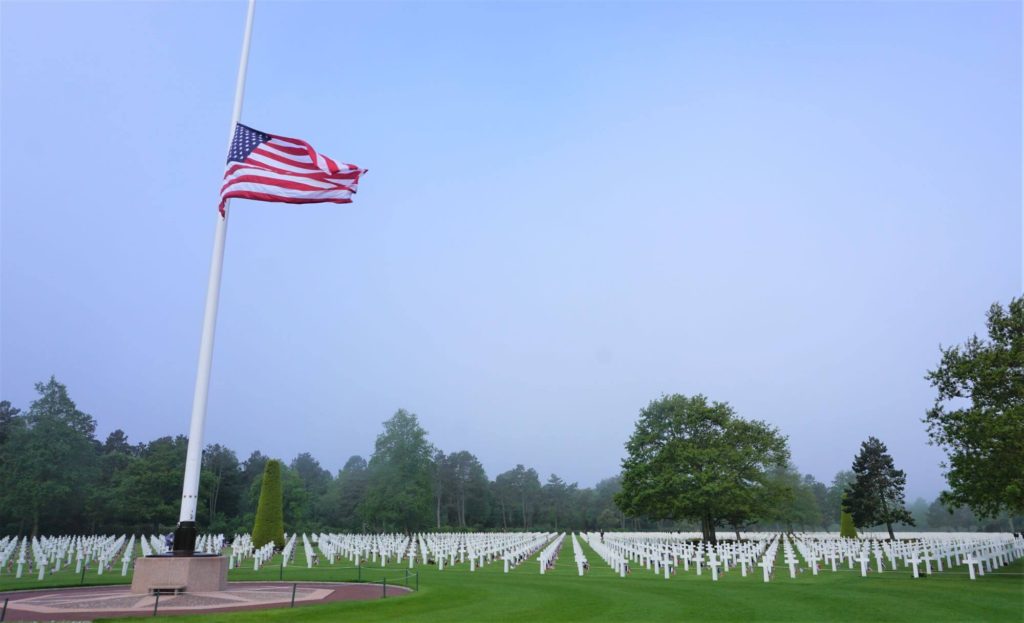
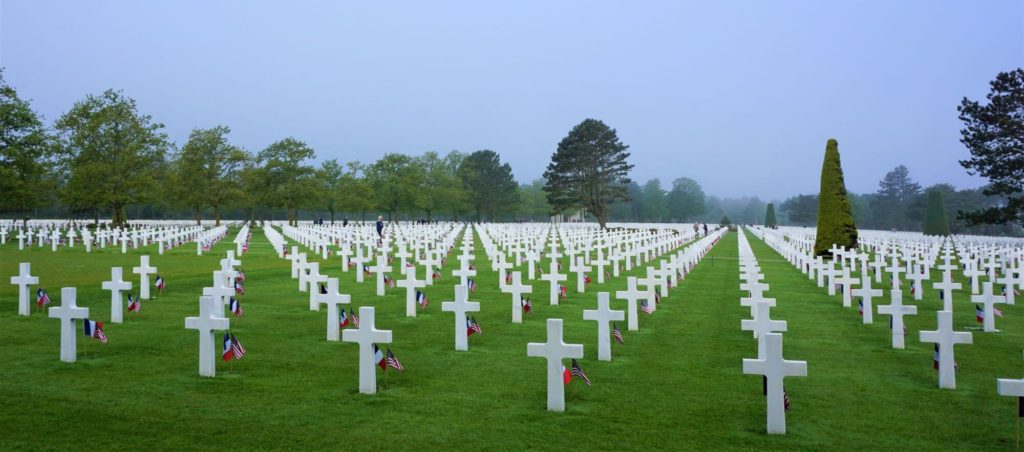
Walking west from the memorial, you pass by the reflecting pool. At the end of the reflecting pool are 2 flag poles, where the American flag flies daily over the cemetery and marks the beginning of the graves area.
Most of the burials are from those that fell on the landings of D-Day, and battles that incurred nearby. As with all American Military Cemeteries, burials are not separated by rank; officers and those enlisted are buried side-by-side.
The cemetery is laid out in the shape of a cross. The central mall (east-west) divides the 10 graves sections, with 5 sections on each side. Each section contains white marble markers, one for each of the fallen soldiers. The markers are either a Star of David or a Latin Cross and arranged in precise rows.
Located within these sections are 3 Medals of Honor (the highest award for valor), 307 unknown, and 4 women. There are also 45 sets of brothers 33 are buried side-by-side, and a father and son are also buried side by side.
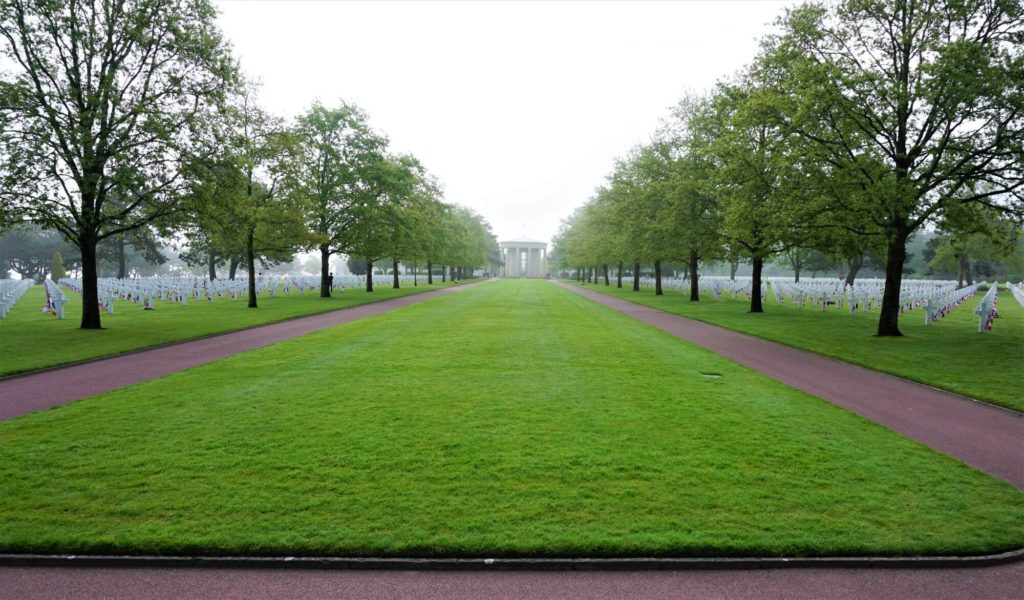
It is difficult to put into words just how special and reverent the Normandy American Cemetery is. It is not until you stand on the bluff overlooking the beach and across the English Channel, that you can even begin to comprehend the enormous struggle these soldiers had to endure. You would have to think that as they approached by sea, looking across the wide beach to the cliffs, and up towards the enemy, many of them knew they would never see home again. This is why they deserve the title, “The Greatest Generation.”
Medal of Honor Recipients
Jimmie W. Monteith, Jr. – 1st. Lieutenant, Army, First Infantry Division; (Plot I, Row 20, Grave 12)
Frank D. Peregory – Technical Sergeant, Army, 3rd Battalion, 29th Infantry Division (Plot G, Row 21, Grave 7)
Theodore Roosevelt, Jr. (son of President Theodore Roosevelt) – Brigadier General, Army, 4th Division (Plot D, Row 28, Grave 45).
- Medal of Honor Citation
- Distinguished Service Cross, Army Distinguished Service Medal, Silver Star (4), Legion of Merit
Notable Burials
3 Generals
- Lieutenant General Lesley J. McNair – U.S. Army – one of the two highest-ranking Americans to be killed in action in World War II (Plot F, Row 28, Grave 42)
- Brigadier General Nelson M. Walker (Plot B, Row 23, Grave 47)
- Brigadier General Theodore Roosevelt, Jr. (Plot D, Row 28, Grave 45)
4 Women
- Private First Class Mary H. Bankston (Plot D, Row 20, Grave 46)
- Private First Class Mary J. Barlow (Polt A. Row 19, Grave 30)
- Private First Class Dolores M. Browne (Plot F, Row 13, Grave 19)
- Elisabeth Richardson, Civilian (Plot A, Row 21, Grave 5)
4 Chaplains
- Chaplain/Captain Peter E. Bonner (Plot J, Row 16, Grave 15)
- Chaplain/1st Lieutenant Arthur Dieffenbacher (Plot D, Row 17, Grave 44)
- Chaplain/Captain Philip B. Edelen (Plot I, Row 13, Grave 28)
- Chaplain/Captain Raymond J. Hansen, (Plot F, Row 1, Grave 30)
4 Civilians
- Bede G. Irvin (Polt A, Row 12, Grave 9)
- Alfred W. Chaskin (Plot A, Row 16, Grave 18)
- Thomas F. Connors (Plot D, Row 14, Grave 4)
- Elisabeth Richardson (Plot A, Row 21, Grave)
Father and Son
- Ollie W. Reed Colonel (Plot E, Row 20, Grave 19)
- Ollie W. Reed, Jr. 1st Lieutenant (Plot #, Row 20, Grave 20)
Other
- Preston and Robert Niland – Brothers who inspired the film Saving Private Ryan. Preston (Plot F, Row 15, Grave 12), Robert (Plot F, Row 15, Grave 11)
Quentin Roosevelt – Son of President Theodore Roosevelt; World War I aviator killed in action in eastern France. After the construction of Normandy American Cemetery, Quentin was reburied next to his brother. (Plot D, Row 28, Grave 46).
Credits
Magali Riviere, Normandy Visitor Center, Cemetery Associate
Find out more information on American Military Cemeteries located throughout Europe.


You May Also Like
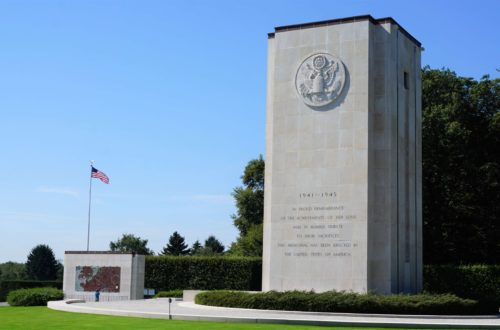
Luxembourg American Cemetery
January 1, 2019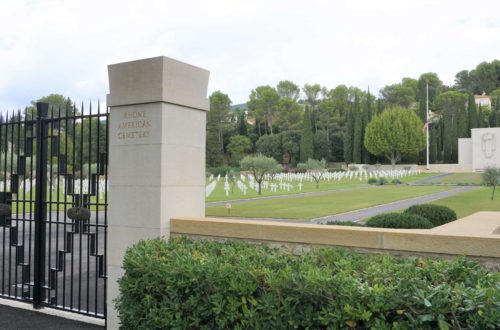
Rhone American Cemetery
January 1, 2019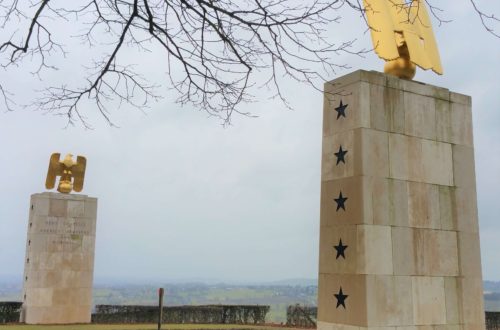
2 Comments
kmf
My family and I love visiting cemeteries to pay our respect and reflect on the lives of others and ours as well. Love learning the history of cemeteries. Subscribing and will share your posts on social.
admin
Thank you so much for your comment. The military cemeteries especially are an incredible place to visit and to pay our respects. These men and women served our country and many lost their lives doing so. I encourage you to check the website on a regular basis as I will continue to highlight the American Military Cemeteries located throughout Europe in honor of the 75th of D-Day and Battle of the Bulge.